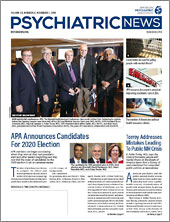Last month, the American Academy of Pediatrics (AAP) released updated guidelines on the diagnosis, evaluation, and treatment of attention-deficit/hyperactivity disorder (ADHD). Though they don’t include drastic changes, the updates reinforce evidence-based treatments, the variations in care for children of different ages, and the importance of gathering information from teachers and other school personnel when making diagnoses.
“It’s nice that the American Academy of Pediatrics developed these updated recommendations because so many children present in their pediatrician’s office, not in their pediatric mental health care practitioner’s office,” said Adelaide Robb, M.D., chief of the division of psychiatry and behavioral sciences at Children’s National Medical Center. “It’s important for pediatricians to have guidance on how to diagnose, evaluate, treat, and make recommendations for kids.”
The AAP’s recommendations were first published in 2000 and were updated in 2011. The most recent updates include incremental changes in response to research that has occurred over the past eight years, as well as the publication of DSM-5 in 2013.
The updated guidelines provide more information on diagnosing and treating comorbid conditions in children and adolescents with ADHD. The AAP states that primary care clinicians who have experience and training in diagnosing and treating the comorbid condition may do so or refer the patient to an appropriate specialist.
Children with ADHD often have other psychiatric symptoms, said Gabrielle Carlson, M.D., a professor of psychiatry and pediatrics at the Renaissance School of Medicine at Stony Brook University. “It’s often a ‘Don’t ask, don’t tell’ scenario: If you don’t ask about the symptoms, people aren’t necessarily going to tell you because they don’t know they are important.”
That’s also why it’s so important for the physician to get relevant information not just from parents but also teachers —and not just regarding the primary condition of ADHD but for co-occurring conditions as well. The patient might be inattentive or socially anxious in school, for example, and the parents could be unaware because teachers didn’t volunteer the information but have observed it and will volunteer it when asked directly.
Pulling together all that information, Carlson said, is critical. “In this day and age, where emphasis in community care is ‘how many people can you see how fast,’ the fact is if you don’t do a thorough job upfront, you’re at risk of embarking down the wrong path and wasting everybody’s time and the child’s life,” she said.
The updated guidelines also outline the special circumstances in diagnosing and treating ADHD in different age groups: preschoolers (between 4 and 6 years old), elementary and middle school–aged children (6 to 12 years old), and adolescents (12 to 18 years). It urges physicians to obtain information from at least two teachers or school personnel when evaluating adolescents, and to conduct clinical interviews with parents for preschool-aged children.
Medication remains a recommended treatment for ADHD, along with behavior management, for middle school–aged children and adolescents. For preschool-aged children, however, the AAP points to evidence-based behavior management and/or behavioral classroom interventions as the first line of treatment.
Robb pointed out that it’s important to work with families, including in cases in which they’re concerned about medication, but that evidence shows medication often results in the best outcomes for many patients. “You have to make sure you have science behind your recommendation,” she said. ■
“Clinical Practice Guideline for the Diagnosis, Evaluation, and Treatment of Attention-Deficit/Hyperactivity Disorder in Children and Adolescents” is posted
here.


